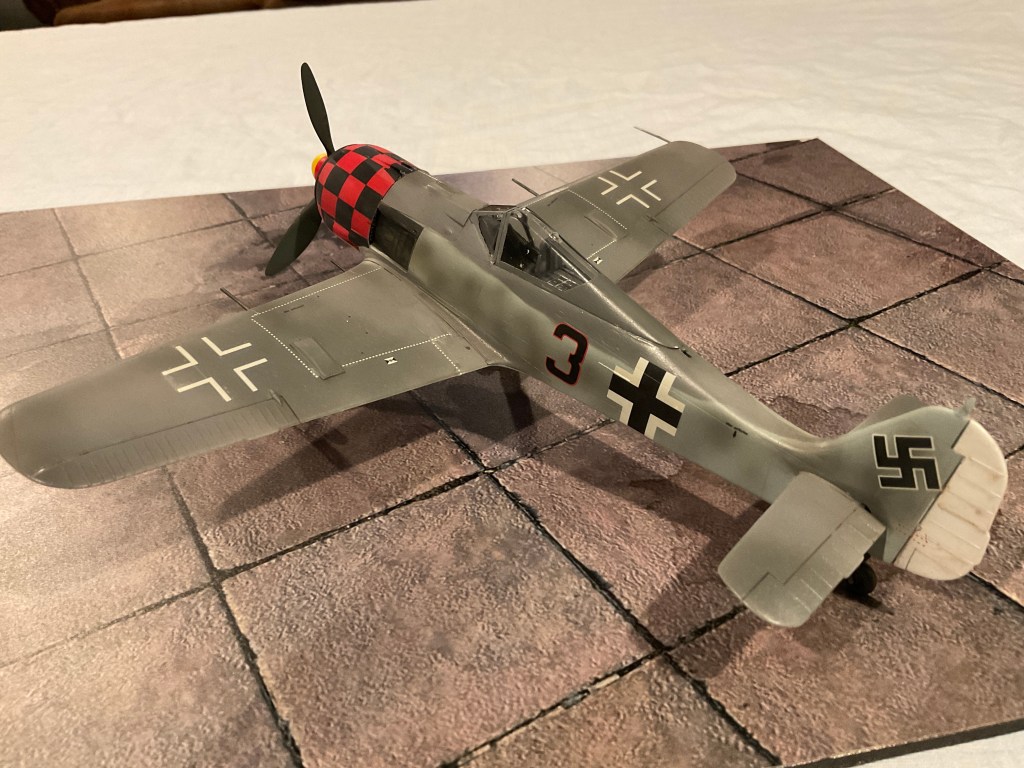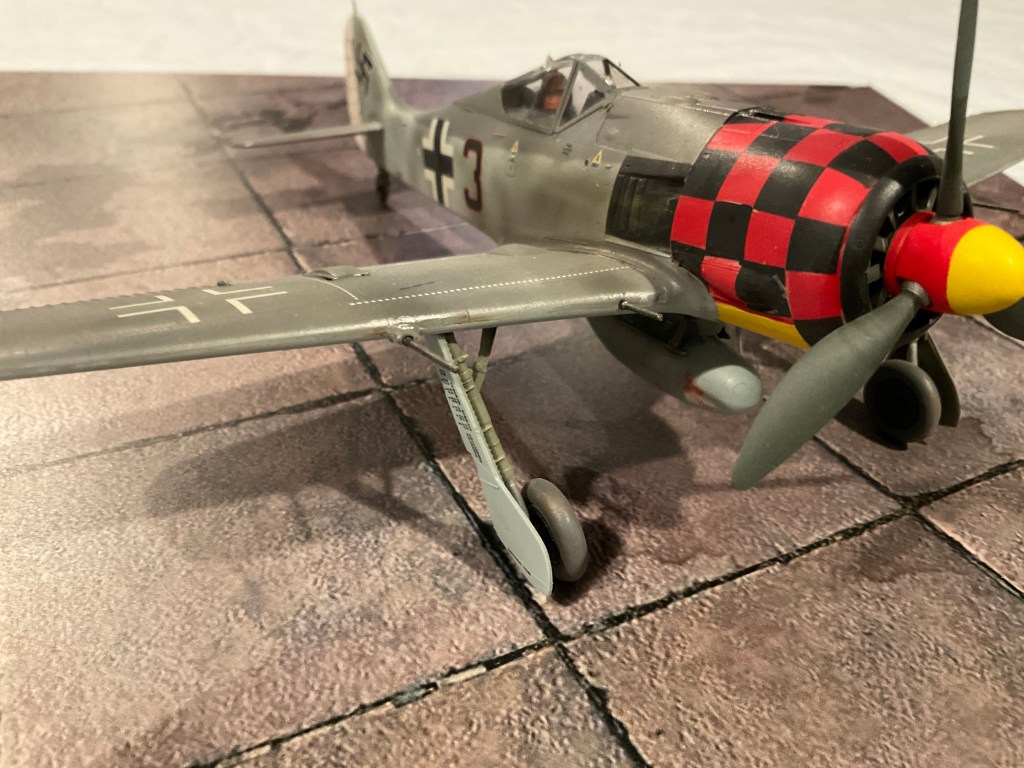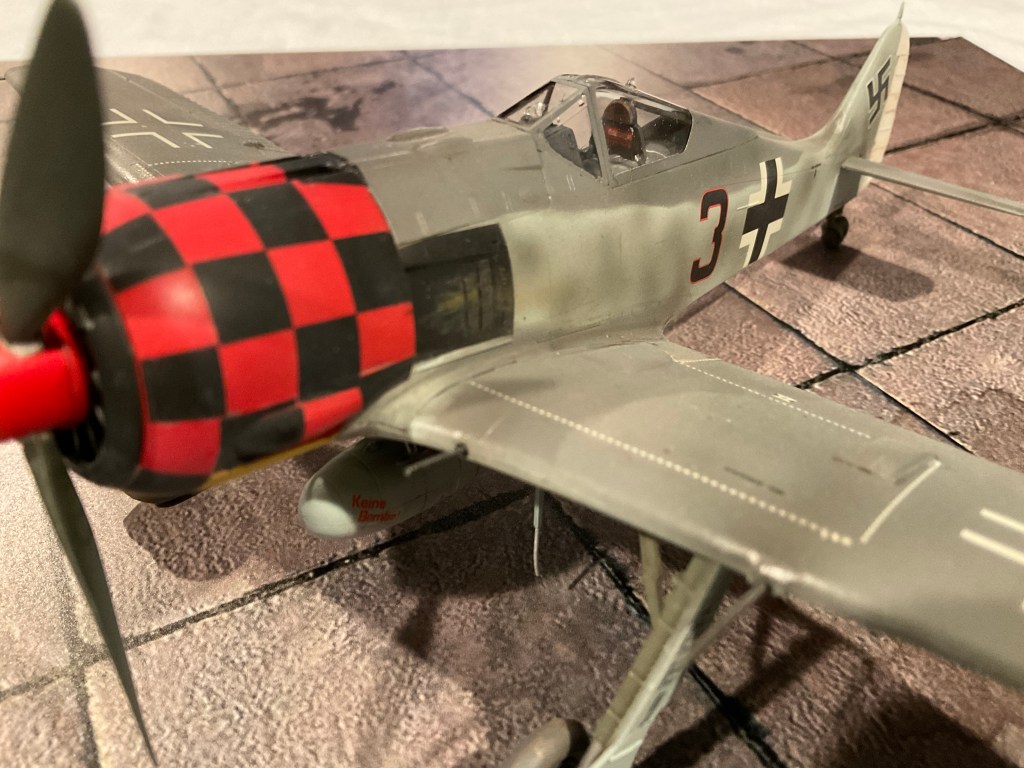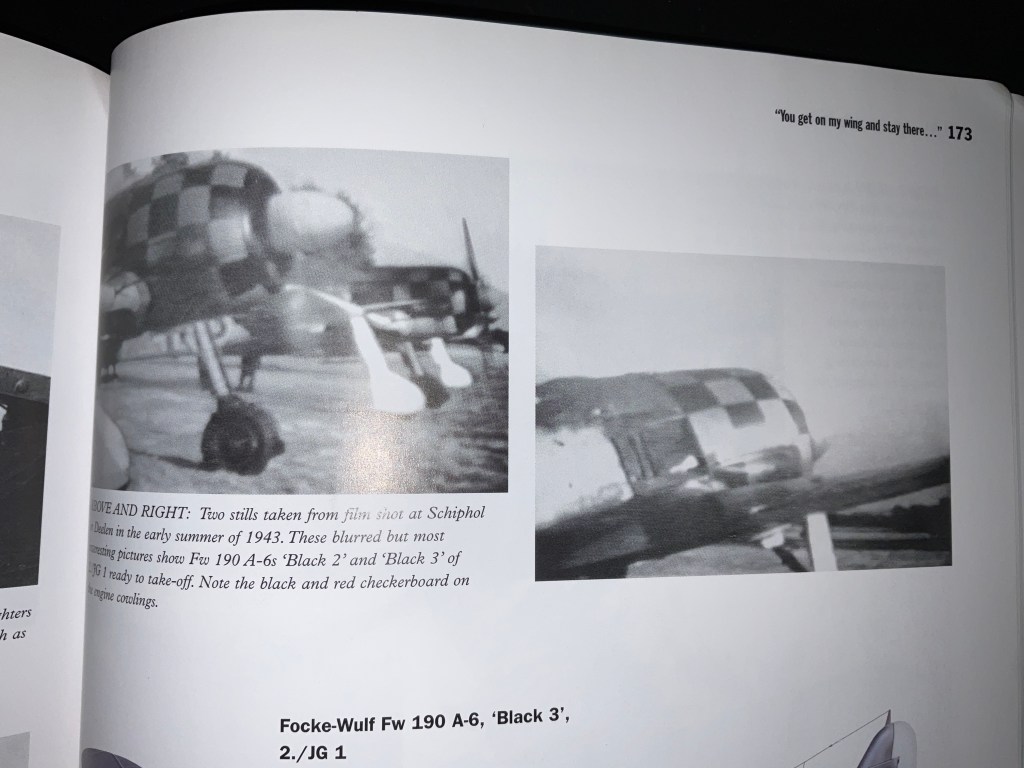1943 was the pinnacle of German air defense. A brief period where the Luftwaffe owned the skies, and Allied bombers entered it only at extreme peril.

Let’s take a look at one colorful combatant from the period of German domination.
From the start of the War, Jagdgeschwader 1 was assigned the defense of Northern Germany. They initially flew the Bf 109, then in 1942 two of the three assigned Gruppen converted to the Fw 190. That’s where things stood in 1943 as the USAAF daylight strategic bombing campaign gathered strength.


Developing an effective long range escort fighter remained a question mark for the US Air Force through most of that year; and much of the senior leadership, known as the “Bomber Mafia” were convinced the bombers could fight their way through without escorts. So larger formations, hundreds of heavy bombers penetrated German airspace that year.

We so often hear of how awful the casualties were. And make no mistake, they were awful. But the task was daunting for the Luftwaffe too. American heavies WERE heavily armed and well protected. Their formations were designed to point heavy machine guns in every possible direction. Resisting this bombing campaign was a major effort for Germany. Fighter Gruppen, planes and pilots, were reassigned from the Eastern Front and Mediterranean. Heavy fighters and night fighters with serious bomber killing firepower were also assigned.

And through 1943 the Germans seemed to winning this part of the War. Every bomber shot down caused ten times the casualties of each defending fighter brought down, not to mention German pilots often returned to action within the day. The climax is usually considered to be two massive missions in August and October. This was the first real attempt identifying a critical strategic target. Eighth Air Force would prioritize the ball bearing plants at Schweinfurt.

The two big Schweinfurt missions have gone down as a disaster for Eighth Air Force. German Air Defense was at its peak capability, and no long range fighters accompanied the bombers. Casualties were massive.
The first was an attempted double strike, to confuse defenses, both Schweinfurt and a Messerschmitt factory at Regensburg were targeted on August 17. Over 376 B-17 bombers (no B-24 Liberators. These had all been assigned to Libya for Operation Tidal Wave) were dispatched and 60 were shot down.
On October 14 a follow up was scheduled. Supposedly at mission briefings, when the target map was revealed, the room was filled with groans and boos. 291 B-17s were assigned. This time, 77 were lost.

The factories were heavily damaged, but this was an obvious victory for the Luftwaffe. Unfortunately for the Americans, Germany had a significant supply of ball bearings. And the industry could be dispersed, or sourced from suppliers in Switzerland or Sweden. So for the cost of a minor logistical headache, a major victory was won.
Unfortunately for the Germans, the Americans learned a valuable lesson. They would fly no more missions into Germany until long-range fighters, in the form of the P-51B Mustang, were available in enough numbers to arrange an escort all the way to the target. And this would be with a new mission. Eighth Fighter Command was now told that whatever the bombers were doing, the extinction of the German fighter force was their priority target. In essence, when bombing missions resumed the bombers would be bait. This started a cycle the Luftwaffe could not win.

This particular aircraft was assigned to those defenders of northern Germany, JG 1. Apart from being at the peak of their effectiveness, 1943 also saw a peak for colorful markings. Briefly, the component Gruppen took to painting their noses solid white, yellow or red depending on which Gruppe. But soon, at least the Fw 190 equipped Gruppen adopted black checks over the color. Early in 1944 the switched to black stripes, so the red and black checks seen here identify this as a late 1943 aircraft.
It was flown by an Austrian pilot, Anton-Rudolf Piffer. He had 26 kills over the Western Allies, 20 of them four-engine heavies. I believe he had kills against both Schweinfurt raids. He was killed by Thunderbolts on June 17, 1944.

This is the Hasegawa kit, with kit decals. I was a little concerned with the complexity of 3-D shapes around the cowling and considered converting the black checkers into masks. But they were quite well engineered for shape, and went down well with a couple applications of Micro Sol. I’m glad I didn’t chose the harder way!


” Briefly, the component Gruppen took to painting their noses solid white, yellow or red depending on which Gruppe ..”
” no former JG 1 personnel could recall any colour combination other than white/black as ever being used on JG 1 Focke-Wulfs “. Peter Rodeike, Jet & Prop (4/03)
Yeah I know there’s some controversy. I was going by research Tom Tullis published in 1999. Its in “Defenders of the Reich” by Eric Mombeek, the one page description may confuse matters more than enlighten. But I think the photos are clear something other than black and white was used, at least on planes based at Schiphol Airport in 1943. And that it didn’t all match the yellow ID panel under the nose. Of course it could have been a fresher yellow?
It is maddening when recollections and photos don’t seem to match up. Like the way Historians and Archeologists argue about the ancient world. Sometimes artifacts are not representative (like maybe the existing photos I’ve seen were taken because they were oddballs?) and sometimes eyewitnesses are faulty (like the Marine vet I talked to based at Midway who swore the famous battle was won by AT-6 Texans based on Midway).
I also knew, as soon as I saw your name, I was going to have to explain it! Which is great.
It also seems to me someone had actual color photo from Schiphol at Hyperscale a few months back. But good luck finding it!
Hi again – I didn’t want to nit-pick as that’s a fine group of models! I agree too about personal recollections. Although deducing colours from B&W photos is not ideal either! Now solid white and yellow cowls, yes, quite possibly…
I know its not definitive. And interpreting black and white, shoot even interpreting color photos from the period is dicey. But I’m satisfied this looks like red. (See photo added at the end of the post above).
An excellent blog post topped off with some excellent model making. Interestingly, the days of Schweinfurt and such huge losses were parallelled relatively closely in the RAF’s Bomber Command by the catastrophic losses they suffered in their night raids, trying to destroy Berlin completely.
It was a very tough period for the allies. No surprise, the Germans briefly thought they were winning.
There was also a time in Spring 1941 when Fighter Command in the RAF started doing special missions in large numbers over the Pas de Calais, codenamed “circuses”, “rodeos”, “ramrods” and so on. Fighting against the brand new Fw 190, they fared extremely badly, even the Spitfires.
I think that was the worst period for British fighters. Well, except for the opening moves in the Pacific War.
It was because the people at the top insisted on Fighter Command maintaining an aggressive attitude. Given that the Luftwaffe unveiled their marvelous new radial engined fighter at the same time, it meant that the Battle of Britain veterans were wiped out in less than six months. Many days of combat finished 10-0, 9-1, 12-2 or with other unsustainable scores.
Definitely not among their best decisions!